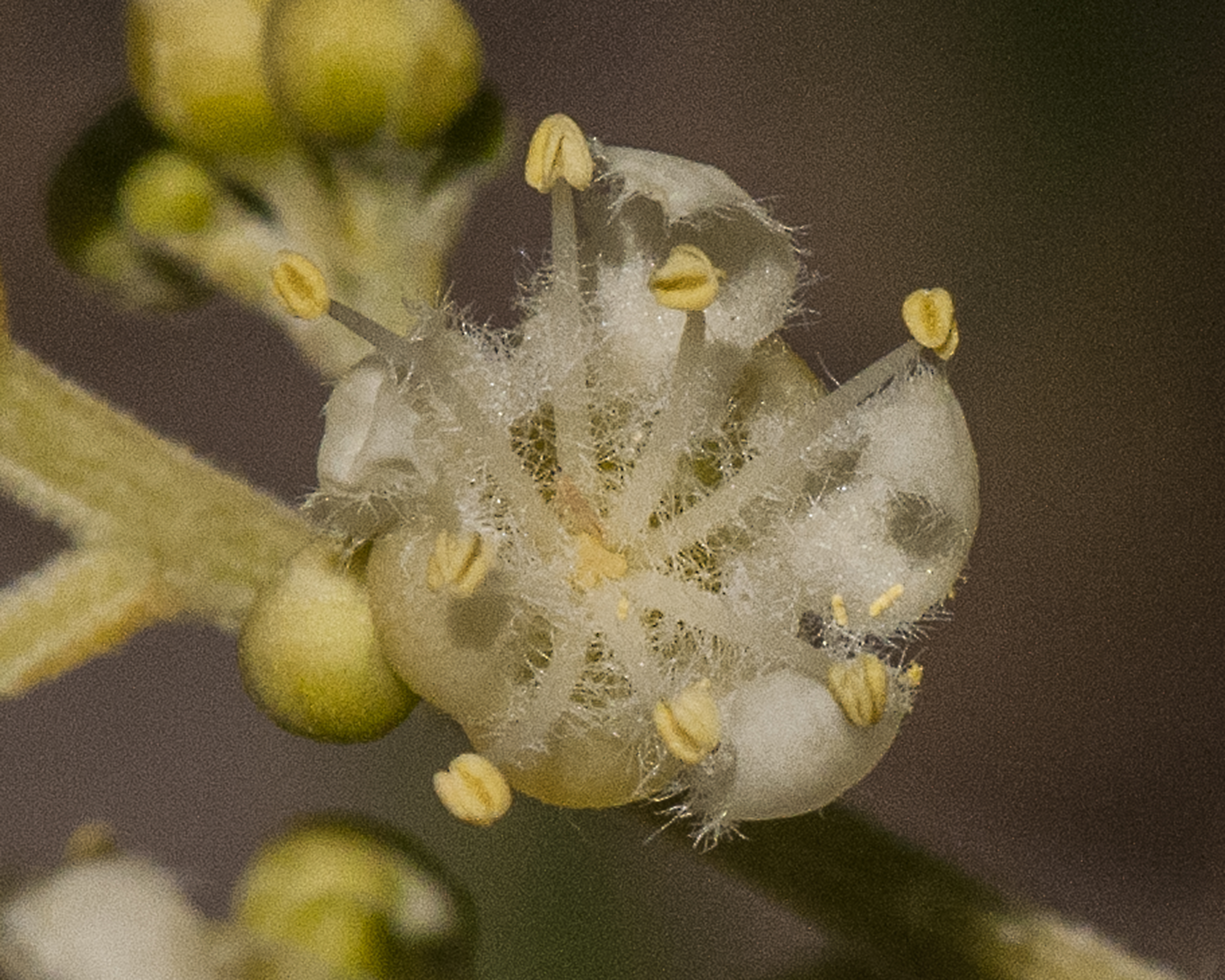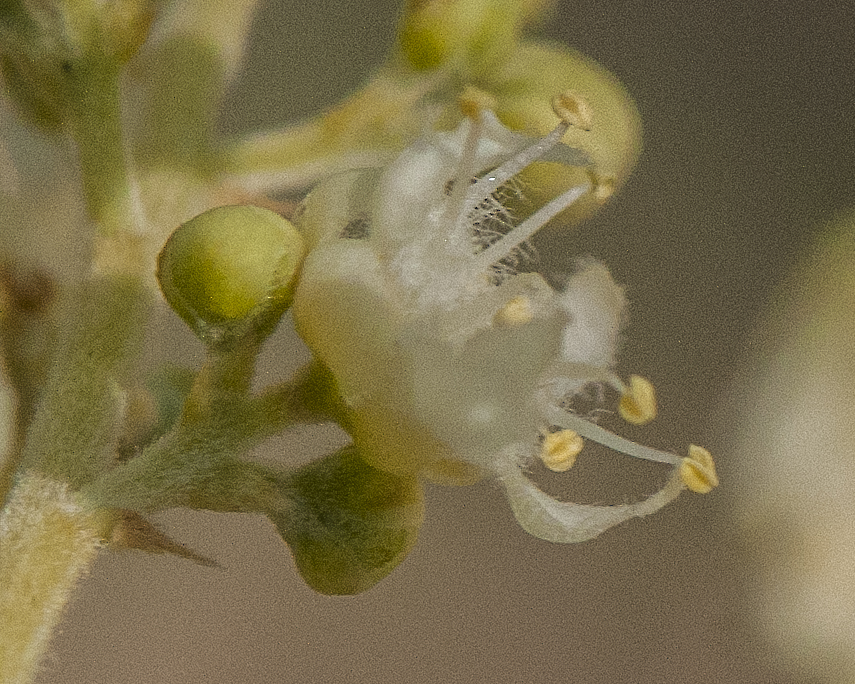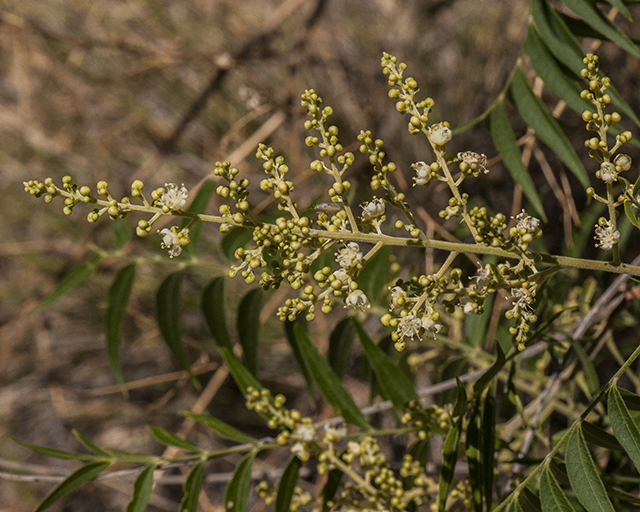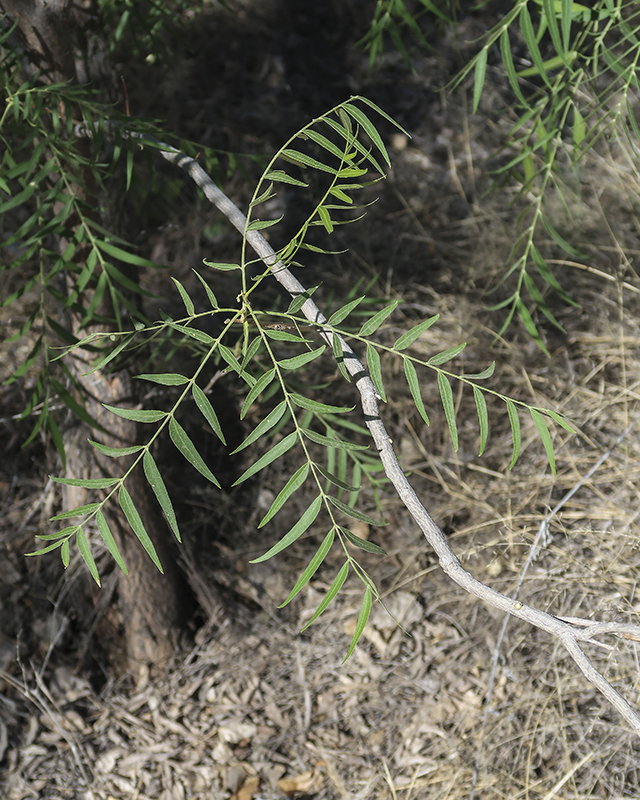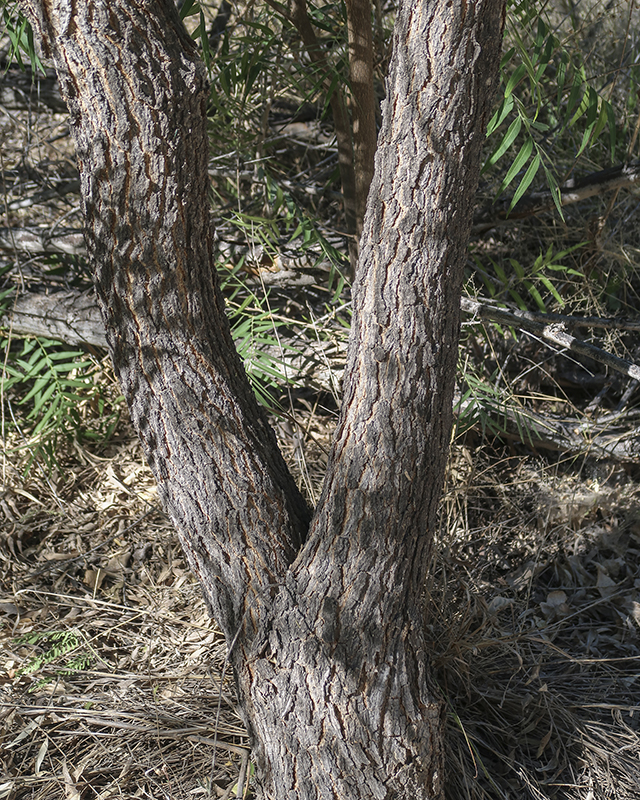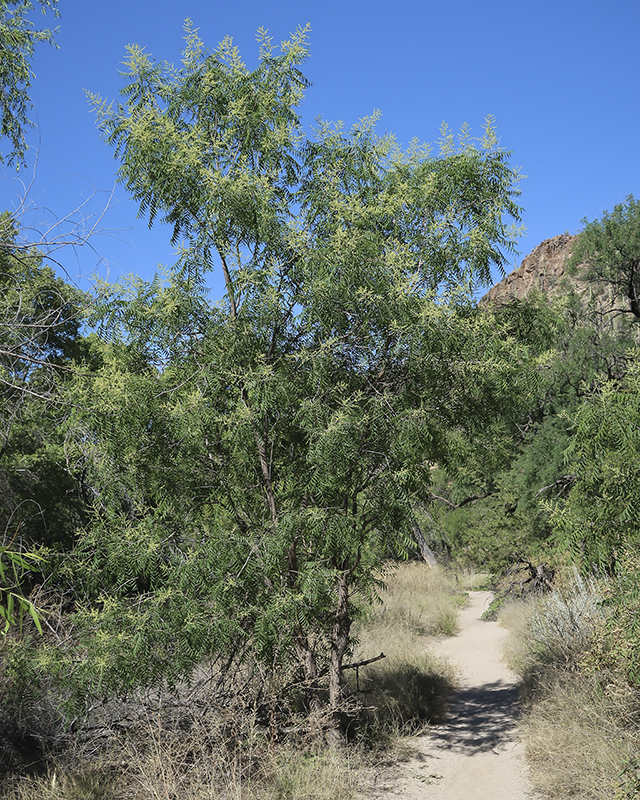Wildflowers of Southern Arizona
Wingleaf Soapberry.
Sapindus saponaria.
Soapberry (Sapindaceae) family.
Duration: Perennial. Nativity: Native. Lifeform: Tree. General: Trees reaching 6 m high, deciduous, monoecious, sometimes with perfect flowers, rough bark, fissured, gray to gray-brown; buds, young leaves, with young twigs densely pubescent. Leaves: Mostly even-pinnately compound, 10-28 cm long; leaflets 6-19 , lanceolate-obovate, falcate, 4-12 cm long, 0.5-2 cm wide, acuminate to obtuse, thinly pubescent on the veins, margins, and lower surface, more densely so along the midvein below. Flowers: Creamy white racemose to paniculate, 15-26 cm long, villous, many-flowered; pedicels 0.5-2 mm long, bracts 1 mm long, yellowish green to reddish brown; flowers 2-6 mm long, 5-8 mm wide, 5 sepals, margins often ciliate; petals 5, mostly with 2 linear scales above the claw. Fruits: Berry 1-1.5 cm in diameter, only one mericarp usually matures, pulp yellow-amber, translucent, reddish black when mature. Ecology: Found in riparian areas, canyons in both desert-grassland and oak-grasslands from 2,500-5,500 ft (762-1676 m); flowers May-July. Distribution: Most of the southern US, from AZ east to SC, north to MO; south through the Greater Antilles, MEX. C. Amer. and S. America. Notes: Distinguished as being an erect, slender shrub to a large tree; older bark that peels in rectangles; and especially the pinnate leaves with lanceolate, falcate leaflets and the leaf material (wings) extending along the rachis. These characters can distinguish from other similar taxa, Juglans, sumac and Aillanthus. Ethnobotany: Used to make beads, the sap was applied to wounds, and the wood was used for arrows. Etymology: Sapindus is thought to derived from Latin sapinus for a type of fir or pine tree, while saponaria comes from the Latin sapo, or soap.
Santa Catalina Mountains
Sabino Canyon Recreation Area.
Location: Creek Trail 0.5 mile above dam.
5/11/17
See SEINet Pictures and Description
See FireFly Forest Pictures and Description


